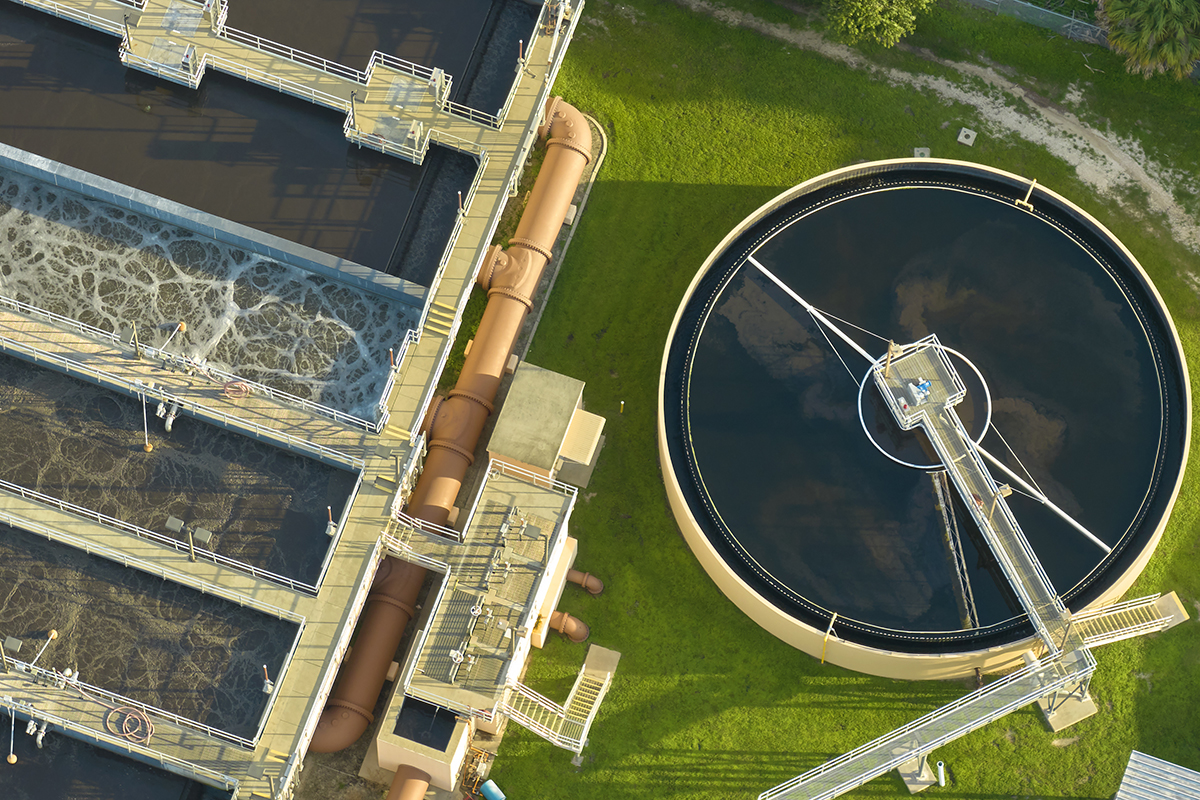The COVID-19 pandemic has affected nearly every aspect of our lives, and that includes our municipal wastewater treatment facilities, where operators have noted an increase of debris in our wastewater. With more people staying home, and more people concerned with sanitization, companies have produced a wide variety of disinfectant wipes, so-called “flushable” wipes, cleaning towelettes and other single-use disposable products intended to make our lives easier. Toilet paper is the only item that should be flushed down the toilet. Unfortunately for municipalities and wastewater operators, disposable items often end up in the toilet and not in the trash where they belong. These types of items have always caused problems for owners and operators of wastewater systems, causing sewer backups and damage to expensive equipment, but it seems the pandemic has made the existing problem worse.
Wastewater must be treated, usually by a municipality, to a level at which it can then be discharged into a natural waterway without harming public health or the environment. To accomplish this, multimillion-dollar wastewater treatment facilities are constructed and operated by municipalities to meet the strict regulations set on them by federal and state regulatory agencies. Often the first, and arguably the most important, component of this treatment process is wastewater screening.
The purpose of screening wastewater is to remove the items that inadvertently come down the sewer pipe and into the wastewater facility, including but not limited to wipes, rocks, sticks, toys, cosmetic products, cleaning products, cigarettes, towels and more. Anything that can get into the sewer system is likely to make it to the treatment facility. The placement of wastewater screening is critical, and it is typically done just before the wastewater is pumped at a lift station or enters a wastewater treatment facility. Screens are usually installed at sewer lift stations, at the head of wastewater treatment facilities, or may even be part of an industrial pretreatment process.
There are many different types of screening equipment, each with its own advantages and disadvantages. Screening equipment can cost anywhere from thousands of dollars for a simple manual bar screen to tens of millions of dollars for a complex headworks screening process for a large wastewater treatment facility. The engineer helps to determine what specific type of screen will be best for the intended application. Some of the most common types of screens include manual bar screens, screw screens and raked bar screens.
Manual bar screens consist of a simple bar grate that the wastewater passes through. They are the simplest and cheapest type of screens but will also have higher maintenance costs and lower capture rates when compared to other screen types. Debris captured by manual bar screens must be manually removed and puts operators at a higher risk of exposure to pathogens. These types of screens are best for temporary bypasses of high-level flows or emergency situations when the main screening equipment has become inoperable.
Screw screens use a perforated plate and auger to remove debris from wastewater and are frequently installed at facilities with smaller flows. They offer increased capture rates over manual screens with lower maintenance costs and a significant reduction in operator exposure to pathogens while still being at a relatively low price point when compared to other screen technologies.
Raked bar screens remove debris using a bar grate that the wastewater flows through, with a rotating automatic rake to remove the debris captured on the grate. Raked bar screens are some of the most common types of screens utilized in the wastewater industry. They offer better capture rates and lower maintenance costs but at a higher initial capital cost. They can be sized to handle a wide variety of flows and perform well in many conditions.
There are many more types screening equipment available on the market today, with various innovative companies testing new screening technologies. Installing any type of wastewater screen will help decrease the debris in your wastewater stream and will protect your downstream pumps and treatment equipment from potential damage. As with any type of equipment, there will be operation and maintenance costs associated with the continued operation of the screen. The screen type and manufacturer will greatly affect the level of maintenance required to keep the screen working as designed.
There are many complex variables that need to be considered when creating a design and selecting screening equipment. When deciding on what screen technology is best for protecting your municipal wastewater investment, it is best to talk with as many equipment manufacturers and operators of screening equipment as possible.
Andrew Stephens is a project engineer in MCE’s Water/Wastewater Department in our Fayetteville office. Contact Andrew by phone at 479-443-2377, or email him at [email protected].










